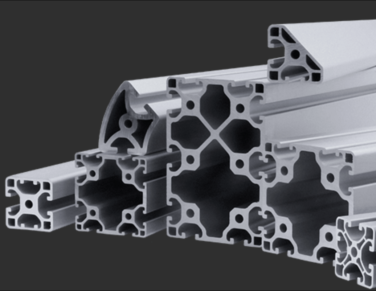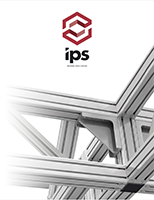Aluminum Profile Extrusion – Choosing the Best Option for Your Project
 Aluminum profile extrusion – often called T-slot aluminum – provides a quick way of building almost any structure or enclosure. Speed is rarely the only consideration though. The assembly must also hold up to the rigors of whatever environment it’s going into. This is achieved by analyzing your design, carefully sorting through the options, and arriving at the one providing the best combination of function and price.
Aluminum profile extrusion – often called T-slot aluminum – provides a quick way of building almost any structure or enclosure. Speed is rarely the only consideration though. The assembly must also hold up to the rigors of whatever environment it’s going into. This is achieved by analyzing your design, carefully sorting through the options, and arriving at the one providing the best combination of function and price.
Strong But Light
While not particularly strong in absolute terms, in extruded form aluminum can provide a great deal of strength. Combine this with relatively low density and you’ve got a material suitable for a wide range of structural applications.
Aluminum Profile Extrusion Strength
The smallest aluminum t-slot profile is 1″ square. For greater strength, just go to a larger size. Resistance to deflection under load rises rapidly as the profile gets larger. The 1″ square piece could be bent around a solid object by hand, but a profile measuring 4″ x 4″ can bear the weight of a small car.
In many structures it’s not the absolute strength of the extruded profile that’s the limiting factor as much as the fasteners used to join it to other pieces of extrusion. The issue is holding the nut that slides inside the t-slot. If a lot of torque is put on the fastener there’s a risk of the nut pulling through the top of the extrusion.
To overcome this, quality aluminum profile extrusion like that sold by Industrial Profile Systems (IPS) is produced in three grades. At IPS these are referred to as L5, L6 and L8. The difference between them is, there’s more metal holding the nut in place in the heavy duty L8 profile than in the light duty L5. (L6 is the standard duty profile that’s “just right’ for most applications.)
Choosing the Profile Your Project Needs
A heavier profile uses more material than one that’s lighter. It follows then that you want to use the lightest duty profile that’s up to the task.
In parallel, you also need to consider the resistance to bending required. Higher loads demand larger section extrusion, although not necessarily a heavier duty profile. (The issue here is joint strength and the tensile loads on the fasteners.)
So how do you decide what you need?
First, determine whether your application is static or dynamic. (One that’s dynamic will have linear motion – typically a slide moving between two or more points.)
Dynamic applications have highly variable loads. In these situations go with the largest section profile you can use. It will resist bending and twisting and provide better performance than a smaller piece.
In static applications, look at the loads on the aluminum profile. This, combined with the length of each piece between supports, determines the amount of deflection likely and therefore the size of cross-section needed.
Fastener loads are hard to analyze. Ideally, you can arrange joints in ways that don’t depend on friction to hold them together. (This is done by having a vertical piece of extrusion supporting a horizontal piece.) Where that isn’t possible, fasteners will be under high tensile loads. In those situations go for the heavy duty L8 profile.
Take a Shortcut
Analyzing loads and fastener tension is a complicated business. If you don’t want to do that, there is another way. IPS provides no-cost engineering support. Bring your design to us and we’ll figure out what profile to use, where. Better still, we’ll produce a list of parts and cut everything to the exact dimensions you need.
Could it be any easier?

